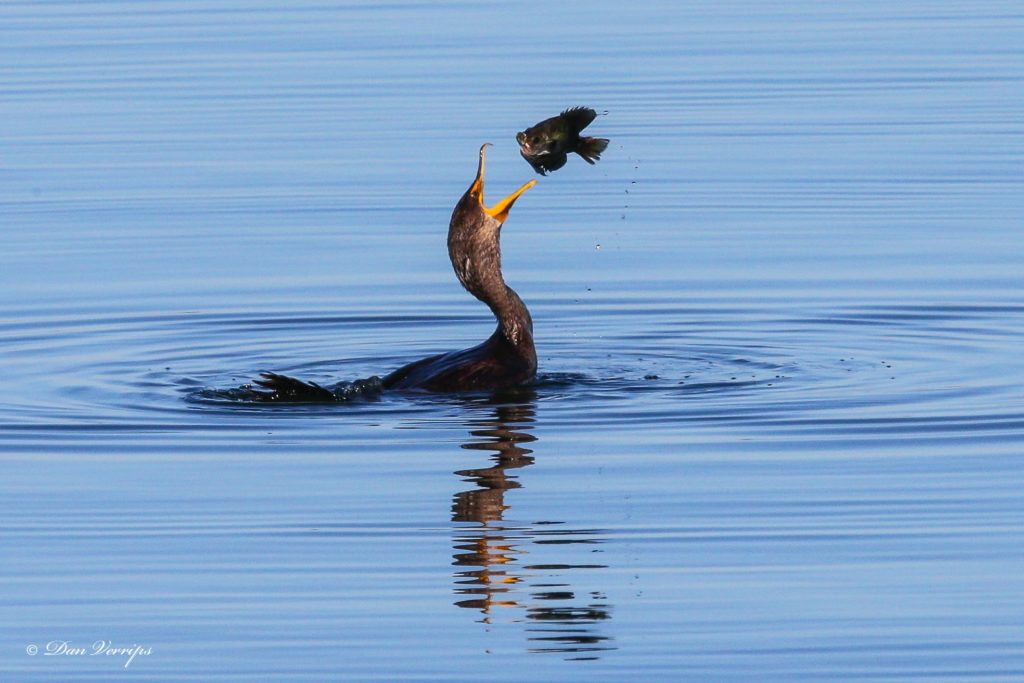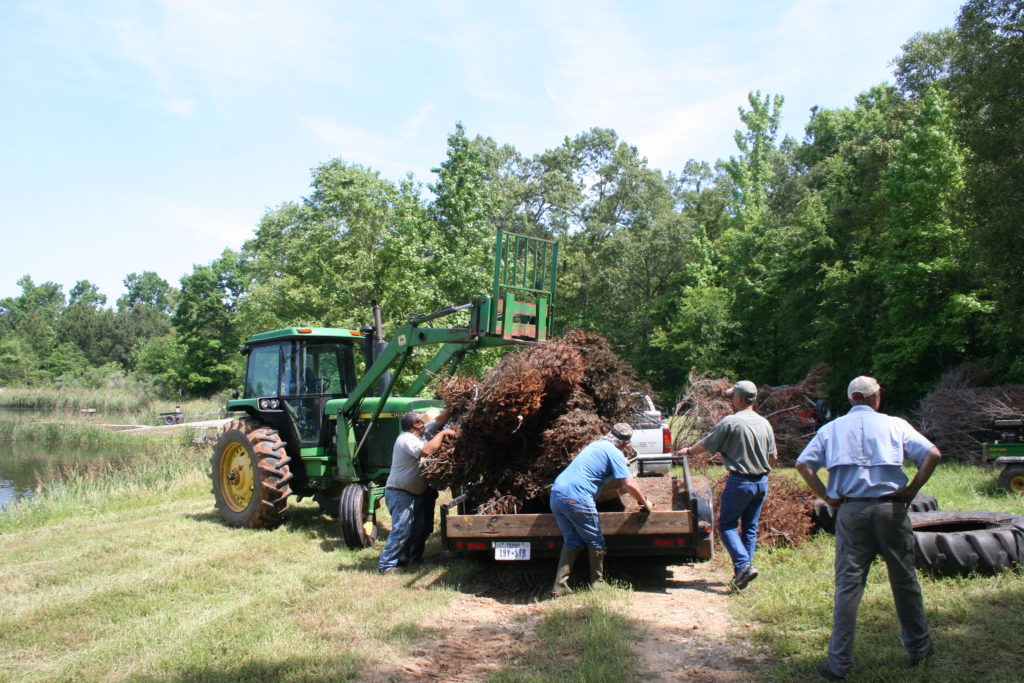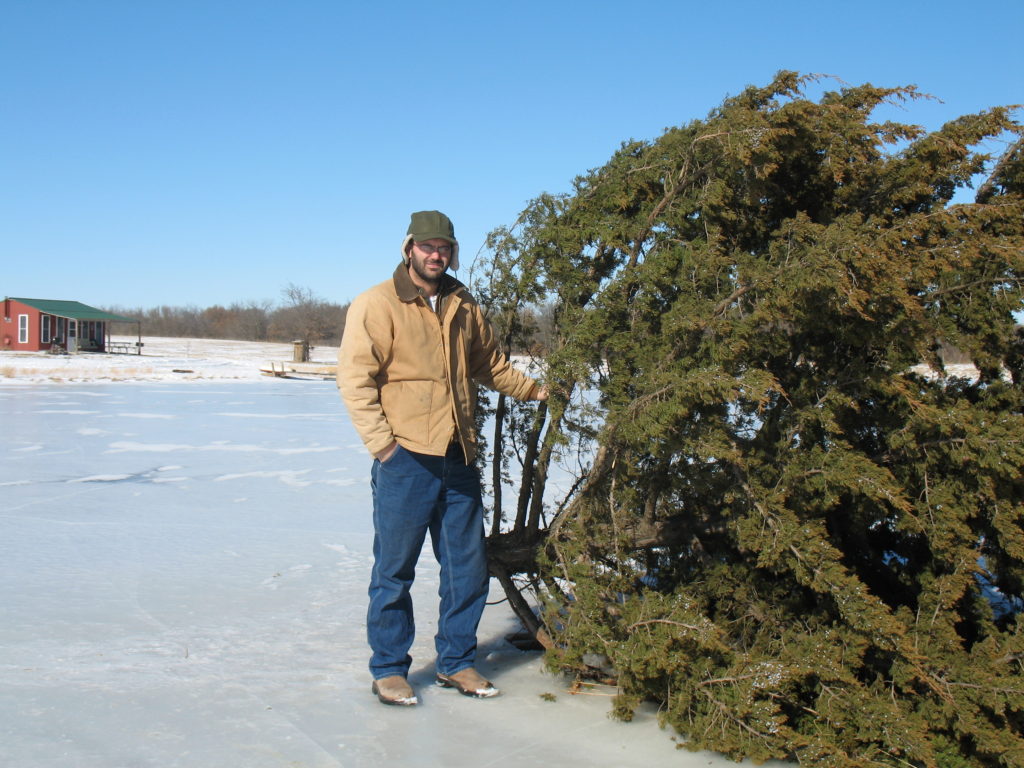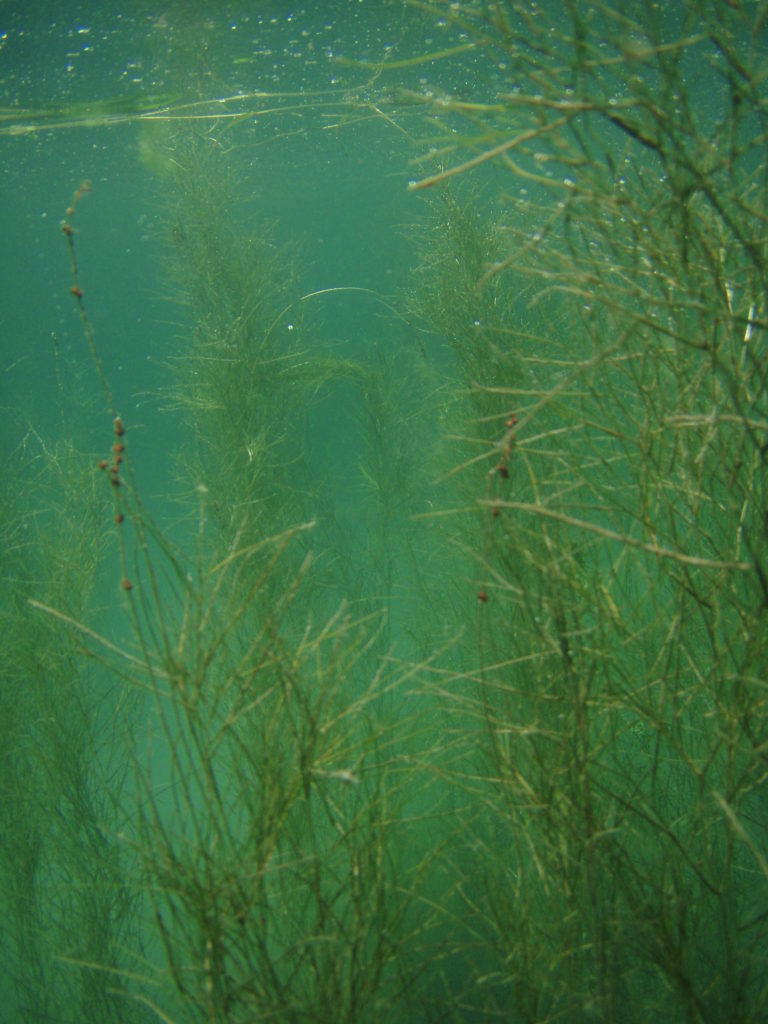
WINTER POND MANAGEMENT
Winter—Your Pond’s Ally?
By: Bob Lusk “Pond Boss”
During the winter, the last thing people tend to think about is their favorite pond. After all, it’s winter…a time for things outside to be at rest.
Your pond doesn’t “rest”…well…okay, I’ll concede that some things do rest. Aquatic plants, for the most part, are dormant. That doesn’t mean they aren’t alive…it means they are squelched. With colder water, most plankton is gone. Fish, cold-blooded creatures, don’t move much.
At the same time, some miraculous things are going on. Water’s affinity for oxygen rises as the temperature drops. That means your water can hold a lot more oxygen during these cold months.

Remember this…most oxygen in water comes from contact with the atmosphere and from photosynthesis of living plants under water. Decaying organic matter uses oxygen, although at a much slower pace than during warmer months. Creatures with gills use oxygen, too.
Where are we going with this, you might be asking?
Without ice cover, which our northern friends have, oxygen is easily replenished. But, when ice forms and is covered with snow, all contact with the air stops. So does photosynthesis.
In older ponds, especially those enriched with heavy sediment and nutrient load from surrounding fields, oxygen consumption often exceeds input from natural sources.
Then, we have this phenomenon called winter kill. Fish can suffocate under the ice.

In Texas, we don’t typically deal with winter kill, with maybe an exceptional winter in the panhandle of the state.
So, how can you use the frigid effects of winter in your pond’s favor?
Over the last decade and a half, pond aeration has been a trend. With vertical movement of water via different types of machines, mankind can increase water’s ability to process its organic matter load and assist in providing oxygen, too, through greater contact with the atmosphere.
SIDE NOTE: Learn more about year round Pond Management by reading another article by Bob Lusk – So, You Have a Pond? Choose to Manage It
Bottom diffusers are quite popular, using high volumes of air pushed to the pond bottom, followed by what looks like a bubble plume similar to Alka-Seltzer to sooth your pond’s upset stomach. There are circulators, fountains and pumps…all designed to move water to assist its cleansing.
When aeration systems are operating during spring, summer and fall, your water has the best opportunity to cleanse itself, preparing for winter’s rest. Turn off those aeration systems in early winter, or run the risk of cooling your water much more than it would naturally.
Here’s the skinny on that concept. Water is most dense at 39 degrees, F. That means water is heaviest at that temperature. It sinks, especially during winter months. It’s normal for your water to be in the low 40’s on pond’s bottom, even though you may or may not see a crust of ice form during the coldest of spells.

With your aeration system operating all winter, you can bet your water temperature will be autonomous from top to bottom. That means your fish can realistically be exposed to water temperatures near freezing during the coldest times.
That’s not good for your fish. Since fish are cold-blooded, they are at the mercy of water temperature. Most warm water fish don’t do well in water temperatures in the lower 30’s. They can handle 40 degrees quite well, but not those cooler waters.
So, your pond benefits from aeration during the warmest months, to set the stage for winter. With clean water and maximum oxygen, fish have less stress as they make it through the winter months. They can develop eggs, keep metabolism lower and eat from time to time to maintain their weight
One important way your pond can benefit is that frigid temperatures can knock back or wipe out some species of unwanted plants. One common recommendation is winter drawdown.
If peripheral plants have become too thick during summer and fall months, drop the pond two or three feet and let nature freeze the roots. If you’re in a region prone to drought, cancel that last recommendation.
Years ago, I’d make the recommendation to drawn down a pond to eliminate plants, and then be called to task from the landowner when it didn’t rain to fill his pond the following spring. Be picky about this recommendation. Also, it helps to know your plants. Drawdown works for some plants and doesn’t for others. For example, coontail, a submerged plant that has no roots and moves with currents, isn’t affected by severe cold. Cattails, left high and dry, can be curtailed…except for the fact they drop seeds on the ground.

What about the fishery in winter? Actually, fisheries biologists often recommend habitat improvement during winter months. We’ve added lots of artificial structure, brush and trees to ponds during the winter months.
How about your equipment? Winter time is an excellent time to do all the maintenance you need. Pull the battery from feeders, maintain aeration systems according to the manufacturer, repair the dock, and put those rivets back in your aluminum boat.
While there are some things you can do to use winter as your pond’s friend, there are also things to avoid. Don’t stock fish during winter, unless you work with a professional who knows their way around the business. If you catch a giant bluegill in a neighbor’s pond, don’t expect that fish to survive a trip to your pond for stocking during cold weather. Avoid handling fish in cold weather. It’s often fatal to the fish, especially if you compromise the slime coat of the little beast. That doesn’t mean you can’t go fishing. You certainly can. Just be sure to use wet hands when handling your fish and release them quickly after catching. Also, if you have a selective harvest program going, use winter to remove some of those non-performing fish. In a bass lake, winter is an easy time to tell the difference between male largemouth bass and the females. Most folks choose to harvest male bass, simply because they don’t grow nearly as large as the girls. Winter can be a good time for thoughtful selective harvest.
Just because we’re wrapped in the throes of family, frigid weather and celebrating the holidays, that doesn’t mean we shouldn’t pay attention to our ponds. Winter can be an ally.
Featured Image Taken by Dan Verrips!
Bob Lusk, the “Pond Boss” is in his 35th year as a private fisheries biologist, traveling the nation designing, building, stocking, and managing premier fishing lakes. He’s editor of Pond Boss magazine and has written three books on the topic. “Perfect Pond, Want One?” is his latest and goes into great detail about designing habitat and building the best pond you can. He can be reached at bob@pondboss.com or call the Pond Boss office at (800)687-6075.
